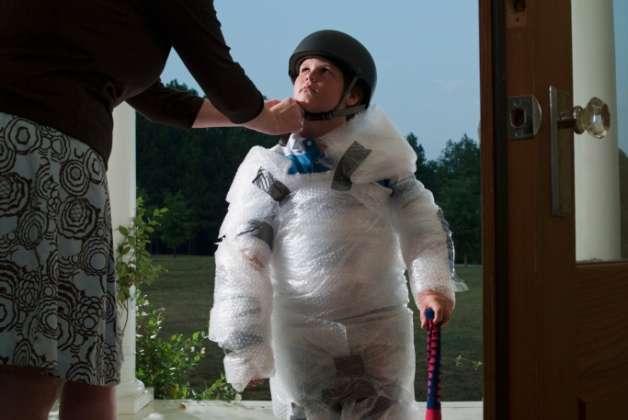Since we can’t live in a bubble: Tackling hormone disruptors
February 13, 2013
Ever feel like you’ve got a lot to get off your chest? I did this week so I wrote about hormone disrupting chemicals, not once, but twice (three times if you count this blog). First, in my column covering a conference on hormone disruptors, talking about what the feds are or aren’t doing to protect us from this family of disruptive chemicals. And since that got me thinking, I wrote some more, in a blog NOW entitled Dying for Us: Considering the Women That Make Our Stuff.
It got me thinking about all the women that work with hazardous chemicals for a living, the women that make the stuff we use everyday – from the canned food and beverages we buy to the cars we sit in, the women who style our hair, do our dry cleaning or help heal us in hospitals, the women who work with cleaners, plastics, solvents, the list goes on. [James] Brophy and [Margaret] Keith found, as a whole, this highly exposed group has a 42% greater chance of getting breast cancer, and depending on where they work, that rate jumps dramatically (think women who make any of the metal goods that surround you, the women who grow the non-organic foods you may buy).
It also got me thinking about something the New York Times said, how hormone disruptors are the tobacco of our time. In truth, they’re worse since they’re so many different products from our cosmetics and our cleaners to our canned foods and our cars. And they’re making us sick in so many different ways – thyroid problems, early puberty, fertility woes, rises in breast/prostate/ testicular cancer, fibroids, endometriosis, genital birth defects, obesity, heart disease, ADHD, the list goes on. Not to mention their impacts on wildlife and biodiversity. Consider it, with climate change, the one-two punch to the planet.
And yeah, while I talk about hormone disruptors almost every week in my columns on flame retardants, bodycare, BPA, reno materials, stain proofers, you name it, and have for years now, something about the conference I went to struck a deeper cord. Having all those scientists, researchers, cancer orgs, women’s networks and workers unions in one room standing together saying, ‘listen we are in crisis, Houston, we have a problem,’ it got my attention and I hope it gets yours. These are the people on the ground looking at the data pleading to be heard by our government regulators, to be heard by corporations, to be heard by chemists, saying look, you can’t keep playing whac-a-mole, tackling one harmful hormone disruptor like BPA or PBDE flame retardants at a time. They just get replaced with other hormone disruptors. You have to take them on as a whole – something Europe is voting on the coming weeks.
I’m going to keep talking about how to minimize the toxins in our lives, sharing tips with you on how to be smart shoppers and how to avoid the chemical minefield out there. But it can’t all fall on us, the people doing the shopping. That still leaves the majority of Canadians swallowing estrogen-mimickers like BPA and exposes the women and men making our stuff to illnesses that shouldn’t come with your paycheque.
So please, tell your politicians elected to represent you that it’s time to deal with hormone disruptors head on. In the meantime, we all have to press for safe chems where we work, safe cleaners in our schools, safe products on shelves – because, despite the rumours, we can’t really quarantine ourselves with bubble wrap.

